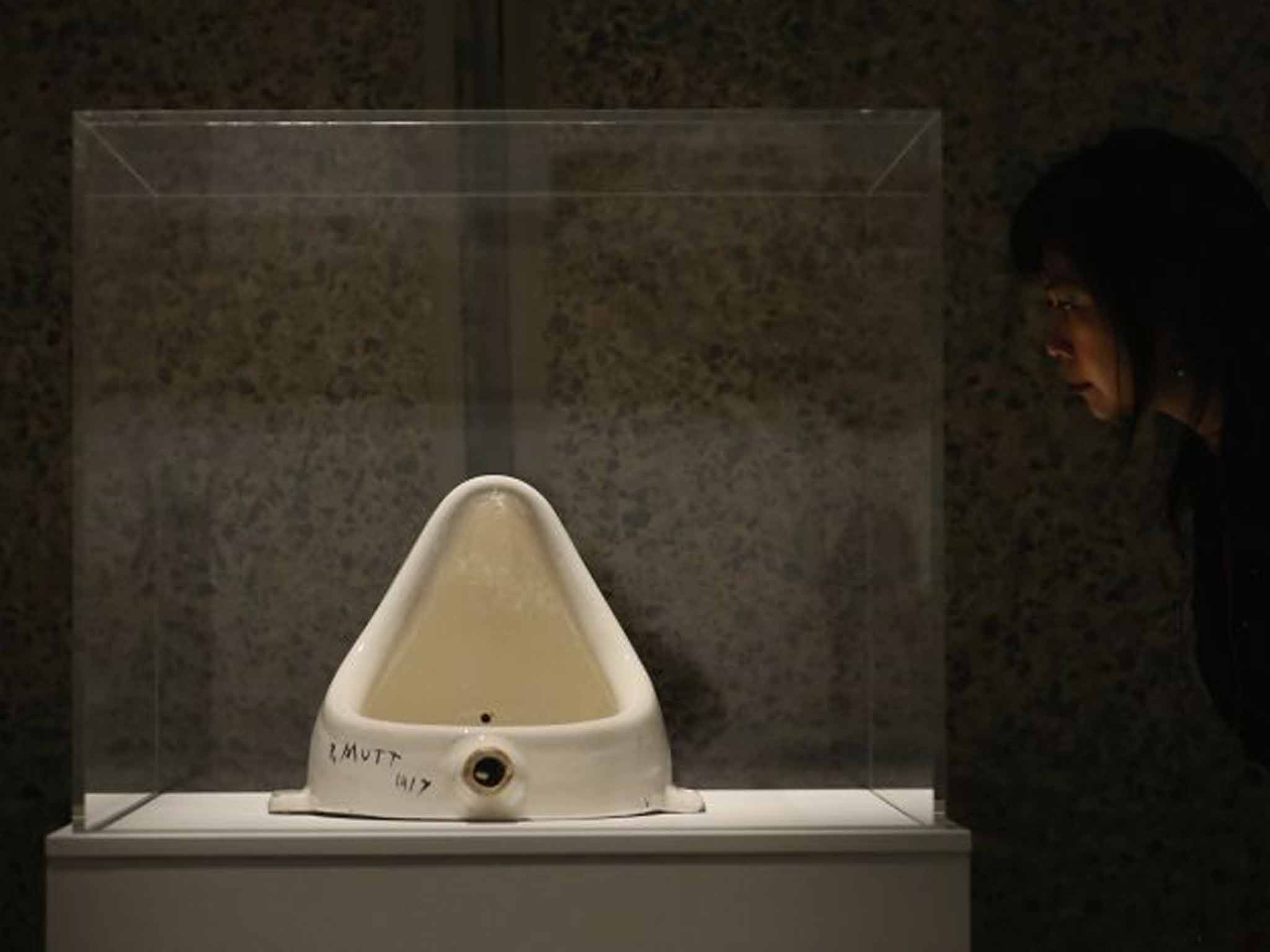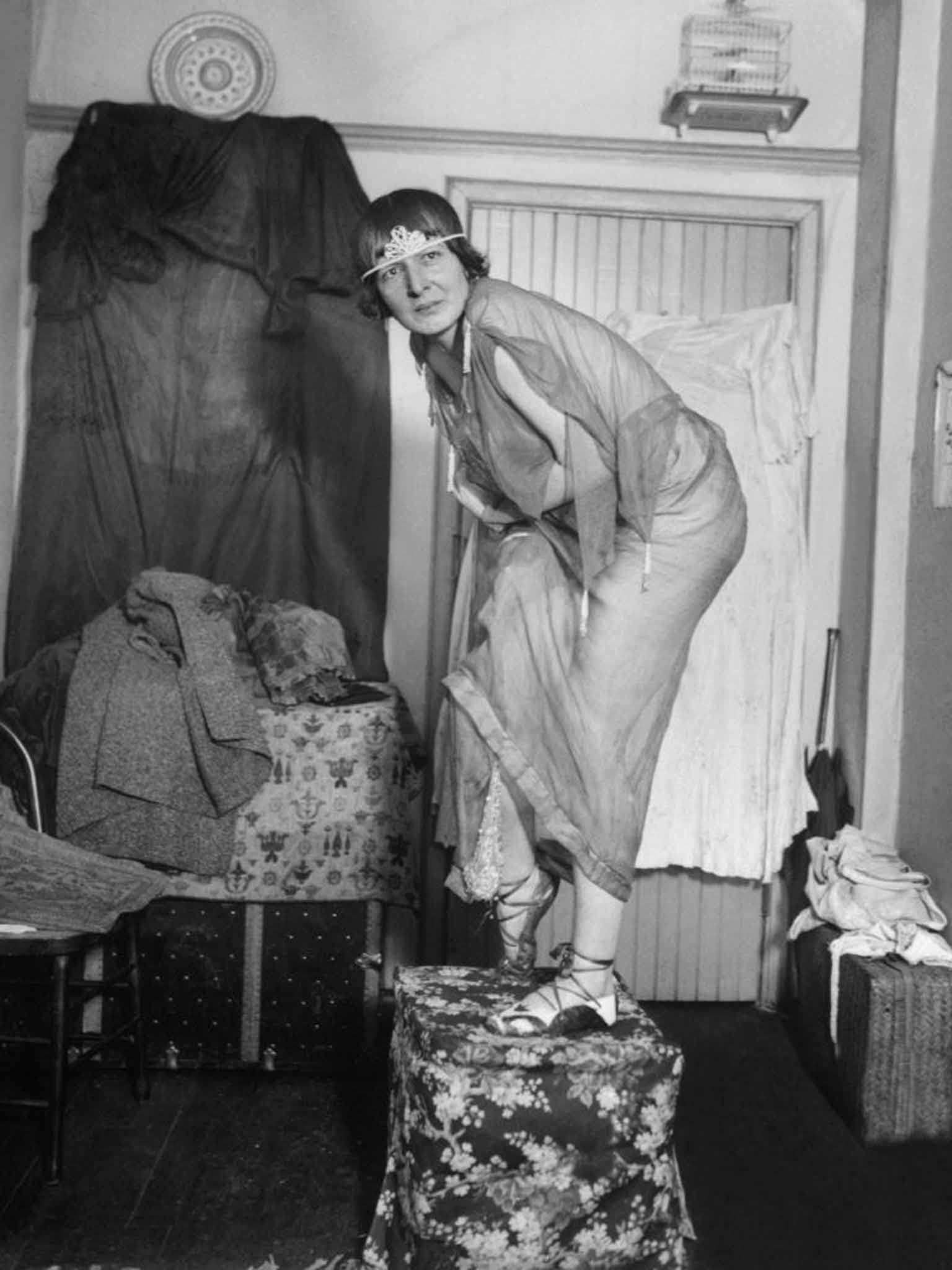Was Marcel Duchamp's 'Fountain' actually created by a long-forgotten pioneering feminist?
In a new book, John Higgs looks at the story behind one of the most famous artworks of the 20th century

Your support helps us to tell the story
From reproductive rights to climate change to Big Tech, The Independent is on the ground when the story is developing. Whether it's investigating the financials of Elon Musk's pro-Trump PAC or producing our latest documentary, 'The A Word', which shines a light on the American women fighting for reproductive rights, we know how important it is to parse out the facts from the messaging.
At such a critical moment in US history, we need reporters on the ground. Your donation allows us to keep sending journalists to speak to both sides of the story.
The Independent is trusted by Americans across the entire political spectrum. And unlike many other quality news outlets, we choose not to lock Americans out of our reporting and analysis with paywalls. We believe quality journalism should be available to everyone, paid for by those who can afford it.
Your support makes all the difference.In March 1917, the Philadelphia-based modernist painter George Biddle hired a 42-year-old German woman as a model. She visited him in his studio, and Biddle told her that he wished to see her naked. The model threw open her scarlet raincoat.
Underneath, she was nude apart from a bra made from two tomato cans and green string, and a small birdcage housing a sorry-looking canary, which hung around her neck. Her only other items of clothing were a large number of curtain rings, recently stolen from Wanamaker's department store, which covered one arm, and a hat which was decorated with carrots, beets and other vegetables.
Poor George Biddle. There he was, thinking that he was the artist and that the woman in front of him, Baroness Elsa von Freytag- Loringhoven, was his model. With one quick reveal the Baroness announced that she was the artist, and he simply her audience.
Then a well-known figure on the New York avant garde art scene, Baroness Elsa was a performance artist, poet and sculptor. She wore cakes as hats, spoons as earrings, black lipstick and postage stamps as makeup. She lived in abject poverty surrounded by her pet dogs and the mice and rats in her apartment, which she fed and encouraged. She was regularly arrested and incarcerated for offences such as petty theft or public nudity. At a time when societal restrictions on female appearance were only starting to soften, she would shave her head, or dye her hair vermillion.
Her work was championed by Ernest Hemingway and Ezra Pound; she was an associate of artists including Man Ray and Marcel Duchamp, and those who met her did not forget her quickly. Yet the Baroness remains invisible in most accounts of the early 20th-century art world. In the eyes of most of the people she met, the way she lived and the art she produced made no sense at all. She was, perhaps, too far ahead of her time.

The Baroness is now recognised as the first American Dada artist, but it might be equally true to say she was the first New York punk, 60 years too early. It took until the early 21st century for her feminist Dada to gain recognition. This reassessment of her work has raised an intriguing possibility: could Baroness Elsa von Freytag-Loringhoven be responsible for what is often regarded as the most significant work of art in the 20th century?
Else Hildegarde Plötz was born in 1874 in the Prussian town of Swinemünde, now Świnoujście in Poland, on the Baltic Sea. When she was 19 she left home and went to Berlin, where she found work as a model and chorus girl. A heady period of sexual experimentation followed, which left her hospitalised with syphilis, before she befriended the cross-dressing graphic artist Melchior Lechter and began moving in avant garde art circles.
The distinction between her life and her art, from this point on, became increasingly irrelevant. Increasingly androgynous, Elsa embarked on a number of marriages and affairs, often with homosexual or impotent men. A marriage to Baron Leopold von Freytag-Loringhoven gave her a title, although the Baron was penniless and worked as a busboy. Shortly after their marriage the First World War broke out, and he went back to Europe to fight.
Around this time the Baroness met, and became somewhat obsessed by, the French-American artist Marcel Duchamp. One of her spontaneous pieces of performance art saw her taking an article about Duchamp's painting Nude Descending a Staircase and rubbing it over every inch of her body, connecting the famous image of a nude with her own naked self. She then recited a poem that climaxed with the declaration: "Marcel, Marcel, I love you like Hell, Marcel."
Duchamp politely declined her sexual advances. He was not a tactile man. But he did recognise the importance and originality of her art. He once said, "[The Baroness] is not a Futurist. She is the future."
Duchamp is known as the father of conceptual art. He abandoned painting on canvas in 1912 and started a painting on a large sheet of glass, but took 10 years to finish it. What he was really looking for were ways to make art outside of traditional painting and sculpture. In 1915 he hit upon an idea he called "readymades", in which everyday objects could be presented as pieces of art. These were a challenge to the art establishment: was the fact that an artist showcased something they found sufficient grounds to regard that object as a work of art? Or, perhaps more accurately, was the idea that an artist challenged the art establishment by presenting a found object sufficiently interesting for that idea to be considered a work of art?
Duchamp's most famous readymade was called Fountain. It was a urinal that was turned on its side and submitted to a 1917 exhibition at the Society of Independent Artists, New York, under the name of a fictitious artist called Richard Mutt. The exhibition aimed to display every work of art that was submitted, so by sending them the urinal Duchamp was challenging them to agree that it was a work of art. This they declined to do. What happened to it is unclear but it seems likely that it was thrown away. Duchamp resigned from the board in protest, and Fountain's rejection overshadowed the rest of the exhibition.

But the reputation of Fountain slowly grew, and Duchamp was rediscovered by a new generation of artists in the 1950s and 1960s. Unfortunately very few of his original works survived, so he began producing reproductions of his most famous pieces. Seventeen copies of Fountain were made. In 2004, a poll of 500 art experts voted Duchamp's Fountain the most influential modern artwork of the 20th century.
But is it true to say that Fountain was Duchamp's work? On 11 April 1917 Duchamp wrote to his sister Suzanne and said that, "One of my female friends who had adopted the pseudonym Richard Mutt sent me a porcelain urinal as a sculpture; since there was nothing indecent about it, there was no reason to reject it." As he was already submitting the urinal under an assumed name, there does not seem to be a reason why he would lie to his sister about a "female friend". The strongest candidate to be this friend was Baroness Elsa von Freytag-Loringhoven. She was in Philadelphia at the time, and contemporary newspaper reports claimed that "Richard Mutt" was from Philadelphia.
If Fountain was Baroness Elsa's work, then the pseudonym it used proves to be a pun. America had just entered the First World War, and Elsa was angry about both the rise in anti-German sentiment and the paucity of the New York art world's response to the conflict. The urinal was signed "R. Mutt 1917", and to a German eye "R. Mutt" suggests armut, meaning poverty or, in the context of the exhibition, intellectual poverty.
Baroness Elsa had been finding objects in the street and declaring them to be works of art since before Duchamp hit upon the idea of "readymades". The earliest that we can date with any certainty was Enduring Ornament, a rusted metal ring just over four inches across, which she found on her way to her wedding to Baron Leopold on 19 November 1913. Not only did Elsa declare that found objects were her sculptures, she frequently gave them religious, spiritual or archetypal names. A piece of wood called Cathedral (1918) is one example. Another is a cast-iron plumber's trap attached to a wooden box, which she called God.
God was long assumed to be the work of an artist called Morton Livingston Schamberg, although it is now accepted that his role in the sculpture was limited to fixing the plumber's trap to its wooden base. Critics often praise the androgynous nature of Fountain, for the act of turning the hard, male object on its side gave it a labial appearance. Duchamp did explore androgyny in the early 1920s, when he used the pseudonym Rrose Sélavy and was photographed in drag by Man Ray. But androgyny is more pronounced in the Baroness' art than it is Duchamp's.
Fountain is base, crude, confrontational and funny. Those are not typical aspects of Duchamp's work, but they summarise the Baroness and her art perfectly. Perhaps more than anything else, it is this that makes a strong case for Fountain being her work, which she sent to Duchamp from Philadelphia to enter into the exhibition, and which he took credit for over 30 years later when both she and the man who photographed the original were dead. To add weight to this claim, Duchamp was said to have bought the urinal himself from JL Mott Iron Works on Fifth Avenue, but later research has shown that this company did not make or sell that particular model of urinal.
In 1923 or 1924, during a period when Baroness Elsa felt abandoned by her friends and colleagues, she painted a mournful picture called Forgotten Like This Parapluie Am I By You – Faithless Bernice! The picture included a leg and foot of someone walking out of the frame, representing all the people who had walked out of her life. It also depicts a urinal, overflowing and spoiling the books on the floor, which had Duchamp's pipe balanced on the lip. The urinal is usually interpreted as a simple reference to Duchamp. But if Fountain was Elsa's work, then his pipe resting on its lip becomes more meaningful. The image becomes emblematic of their spoiled relationship.
This book extract was taken from 'Stranger Than We Can Imagine: Making Sense of the Twentieth Century' by John Higgs, published by Weidenfeld & Nicolson, £20
Join our commenting forum
Join thought-provoking conversations, follow other Independent readers and see their replies
Comments